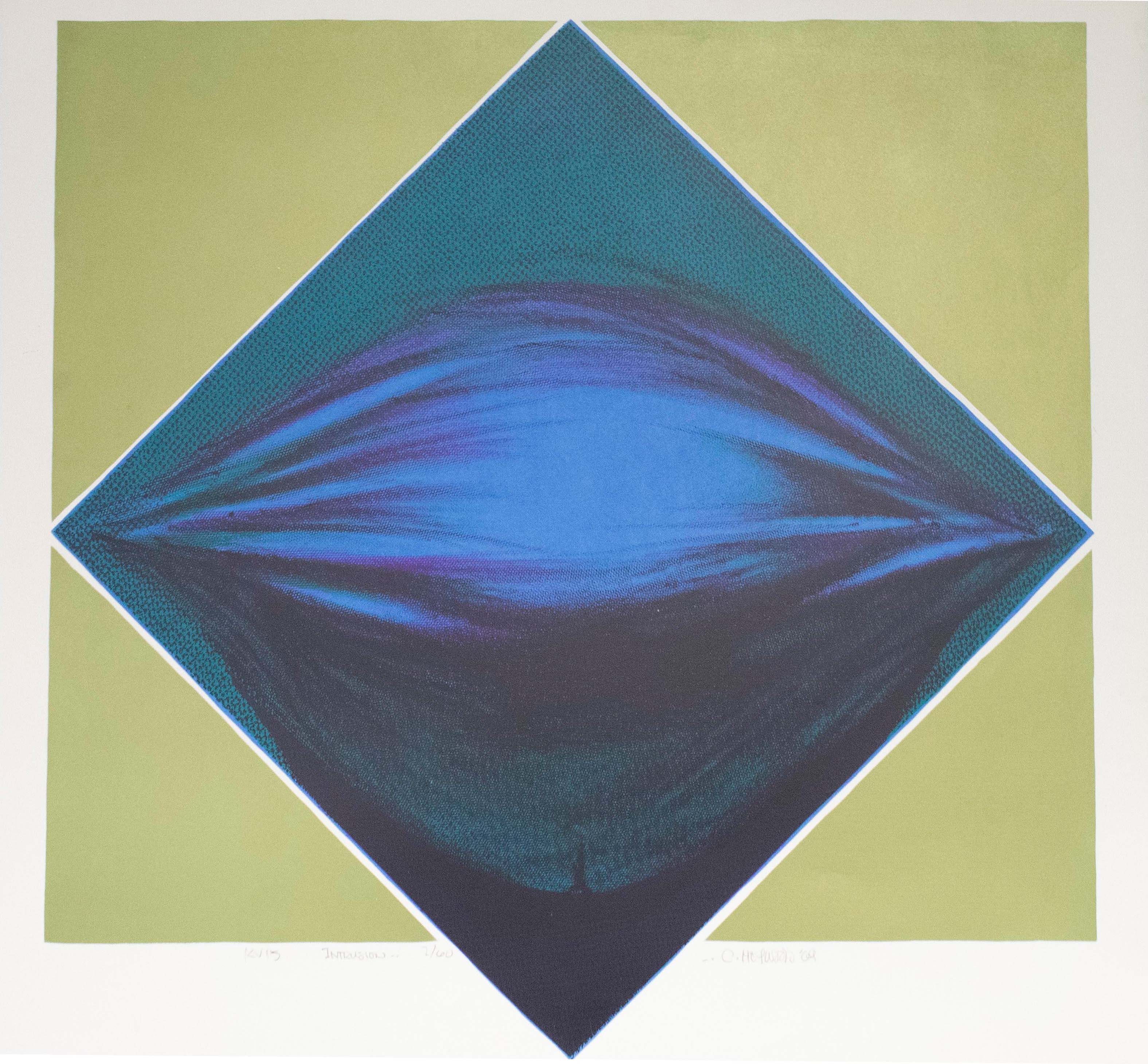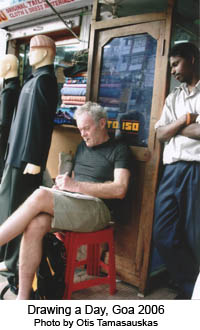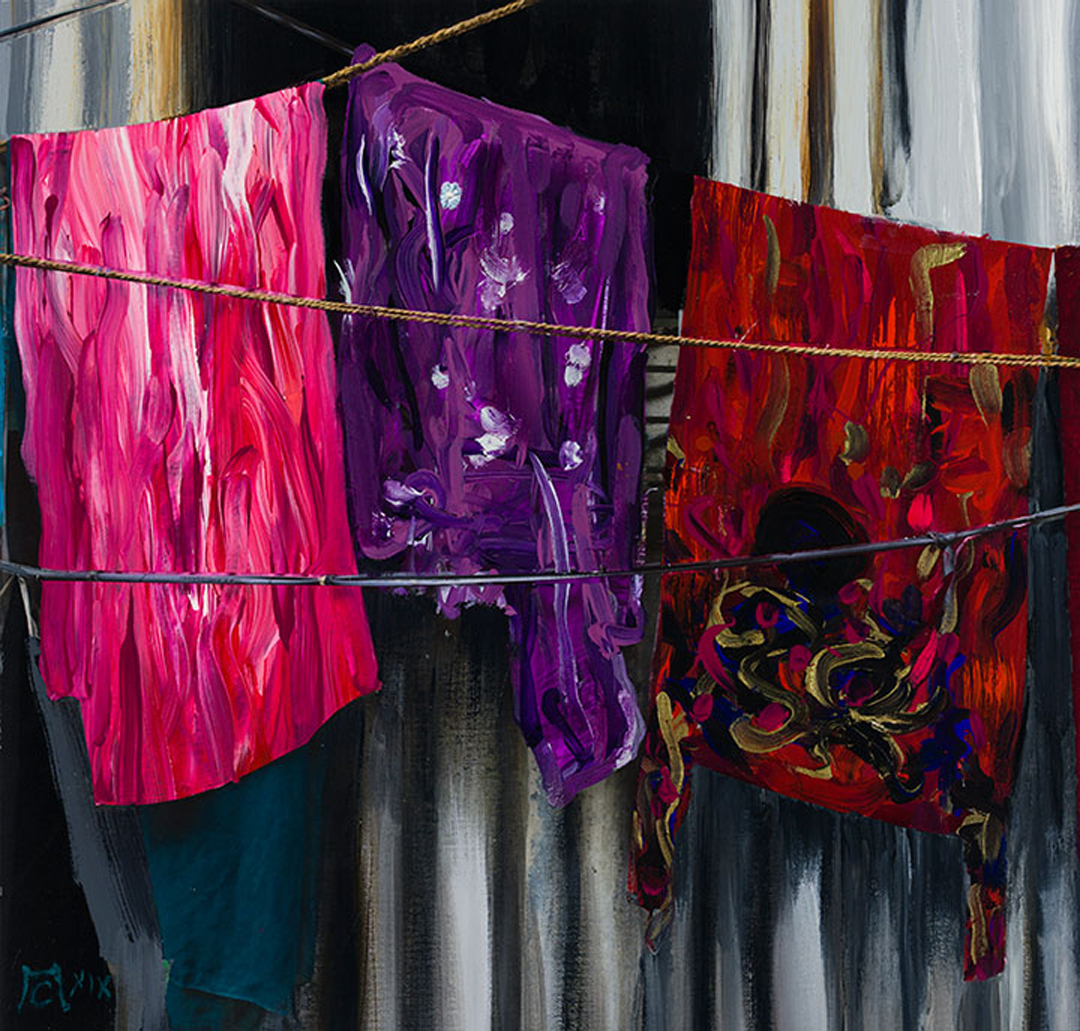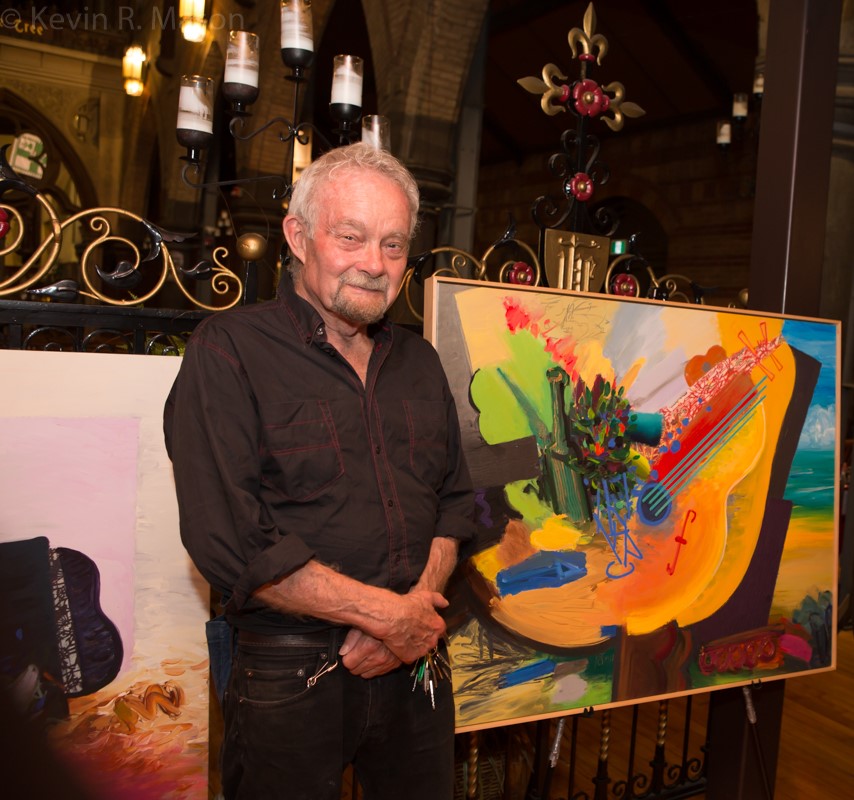- Home
- Life's work of Carl Heywood
Life's work of Carl Heywood
The staff at mardenart were blessed to have worked closely with Carl Heywood cataloging is work for over a year. The gallery is pleased to offer his entire remaining works from all periods of his career. We invite you to read more about this ambitious prolific artist.
For me, creating images is the most wonderful of games...
My idea of a good time is devising little worlds with their own inner structures, energies, and ideas engaging in visual dialogues with forces within and without.
It is like swinging on a rope out into a river:
a focus that engages me mentally,
sensually physically, spiritually...a meditation, a joy.
 The artist in front of his work Vanity Vanity Version One
The artist in front of his work Vanity Vanity Version One
Canadian contemporary artist J. Carl Heywood had a prolific career as print maker and painter for over sixty years. After the sudden death of his father, fourteen-year-old Heywood realized that life was too short to not pursue one’s dreams.
After high school, his family and friend helped raise funds for him to attend art school. In 1959, Heywood entered the Ontario College of Art (OCA) where he received traditional fine art training. He developed his drawing and technical virtuosity. However, the lack of conceptual strategies prompted him to seek them elsewhere. However, during his time at OCA he discovered printmaking.
He told Walter Jule, his fellow printmaker during an interview:
I was working next to Michael Stewart. He’d been doing silkscreen, and I said, “Well maybe you can show me how to do this. It looks kind of interesting.” So I did my first silkscreen around February of my final year, and it was love at first sight! At the time, it was the only print medium that gave any flexibility with colour. I realized then that I had just wasted all that time doing woodcut. I didn’t really like it at all.
He taught art for four years in Ontario before traveling to Montreal looking for passage on a ship to France. His destination was Hayter’s "Atelier 17", a print workshop founded in Paris in 1927.
He told Jules going to Paris was, "A way of breaking out of the life I could see shaping up for me in Canada. I’d spent three or four years trying to work out the usual problems of doing art in a vacuum, which was what Ontario was at that time."
Heywood arrived in Paris by the late 1960’s, a time of student demonstrations, radical politics, and sexual experimentation. He acquired a studio from artist Madelaine Young and setup his own printmaking facility which he would use at night. During the day, he worked at Hayter’s atelier on rue Daguerre where he learnt a complicated series of etching techniques and inking processes. His training at Atelier 17 gave Heywood new options and aesthetic alternatives to his formal OCA training, transforming the provincial amateur into an accomplished professional.
He was excited to be in Paris, he told Jule. "It was the excitement above all, and being with people doing prints all day every day and loving it. I said I had been bored silly before? Well this was the exact opposite, thrilling all day long. Exhilarating. And it still works, by the way. One of my students was working at Atelier 17 a while ago, and he talked about the same kind of magic. "

Intrusion (1969) by Heywood - Limited Edition Silkscreen print
Heywood has exhibited his prints internationally in Berlin, Taiwan, Norway, Yugoslavia, Poland, China, and New Mexico. His prints are part of permanent collections in over twenty-three different museums worldwide; the New York Metropolitan Museum, the Museum of Modern Art (MOMA), the Art Gallery of Ontario (AGO) and the "Musée d’art moderne de Paris", among others.
Heywood’s production style was described as a sustained study of visual language. He composed his creations in a musical way; with tension and repose, arrangements of line and shape, chords and nuances of colour, tonalities of dark and light, shallow and deep space, contrast and harmony, varieties of texture and of treatment. Since the 1970's, he pursued these formal concerns often with still life imagery whether it be through etching, lithography, screen printing, or digital means.


India Laundry - painting by Carl Heywood
His painting technique - which he began once retired in 2006, the artist always started with a collage and/or constructions, which are then digitally transferred onto the canvas. His compositions evolve in different ways as they are developed into painted images by enhancing them with acrylic mediums. Heywood’s artistic process satisfied his endless curiosity, his need for invention and his desire to explore the image in progress.
Everything keeps changing as you work through the various stages and ramifications of the developing event. You drop some things and gain others.
 Heywood with his painting - A Study in Surfaces
Heywood with his painting - A Study in Surfaces
"...it seems to me that most of life is a jumble of experiences, good and bad, without much point or sense, really. And yet art operates for me like a magnet, to bring structure and order to those more or less random experiences."
Starting in 2021, Heywood began working with us here at the mardenart gallery to properly catalogue his life’s work. He spent many hours here with staff at the gallery and at his studio. Undaunted by the scope of the project he was always eager to recount stories about the people he had met, his adventurous experiences as an artist and his extensive travels, many of which influenced his work such as the Japan with Flowers and many others, Tunisia & Vegetables, Coffee in Taipei, and India Laundry to name a few.
Heywood passed away suddenly on December 1, 2022.
“He truly dedicated his life to his art,” said Corinne Krikorian, Gallery Assistant, who worked closely with Heywood. “When I asked him if he had any regrets. He answered ‘none.’ He lived his life exactly how wanted to live it.”
He will be greatly missed by the staff here. Mardenart gallery is now holds the full collection of Heywood’s work including paintings, limited edition prints, and overrun prints.